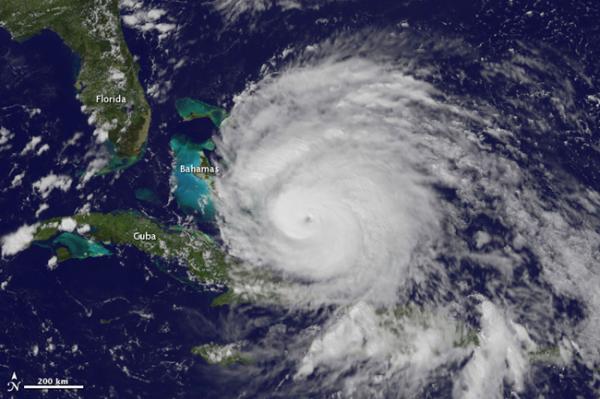6 Tips for Evacuating from Hurricane Irene

Emergency officials in each state designate evacuation zones, and formulate plans for how residents in each zone should evacuate if it becomes necessary for them to do so. If you live near the East Coast, your home may be located in an evacuation zone. If it is, and especially if you live in a high-rise building or mobile home, you may be ordered to evacuate in the coming days if Hurricane Irene continues to gain steam along its current path. What should you do now to prepare?
1) Make a plan.
Find out whether you live in an evacuation zone at your state's emergency preparedness website. Here are the links for New York, South Carolina, North Carolina, Virginia, New Jersey, Maryland, Massachusetts.
The National Hurricane Center recommends evacuating to the nearest safe spot (even if that's within the same county, as long as it's outside the evacuation zone) so as to minimize travel time and traffic jams. If you plan to go to a hotel or motel, make reservations ahead of time. Wherever you plan to go, call your loved ones before you leave to let them know where you'll be, because strong winds, storm surges and floods from Hurricane Irene could disrupt cellphone service.
2) Gas up car.
NBC News' Kerry Sanders has covered every major hurricane in the past 30 years. Before Hurricane Irene arrives, he wrote in a recent story, "The number one item folks should get now is: a full tank of gasoline. It's not so much that the stations will run out of gas, but rather it's a good proactive move to avoid wasting time waiting in long lines later."
If you don't have a car, make plans with friends or neighbors who do. If no one you know has a car, see the next tip.
Sign up for the Live Science daily newsletter now
Get the world’s most fascinating discoveries delivered straight to your inbox.
3) Pack car with food/water/precious items.
Keep Hurricane Katrina in mind. You can never be sure how events will progress in the days after a hurricane hits. It's best to be prepared for anything, and that means stocking up on water (1 gallon per person per day) and some nonperishable food, such as granola bars, canned food, peanut butter, jelly and a loaf of bread. Store these in a cooler in your car.
Must-have items — which you must take, whether you have a car or just a backpack — are medicine, essential child care items such as diapers, and insurance information.
If you have a car, you'll also want to take valuables with you. Take laptops, photo albums, passports and anything else you consider irreplaceable. If you don't have a car, travel more lightly. Your state may have a plan for transporting transit-dependent people to the nearest emergency shelter (where there will be water and restrooms). Find out from your state's emergency management website.
4) Take photos of the inside of your home.
Take photographs or video of each room in your home, and in particular, precious items. If your house is torn apart by wind, or swept away by the storm surge, this documentation will come in handy later on when you're filing a claim with your insurance company. Photographs are particularly useful for small items that you might otherwise forget in the big picture of trying to reassemble your life. [A History of Destruction: 8 Great Hurricanes]
5) Prepare your home.
Secure any loose items so that strong winds or floods don't carry them away. Move small knick-knacks from shelves into drawers, for example. Nail plywood over your windows. Don't just open them or tape them shut — neither will protect the inside of your house from water or broken glass. If you're directed by your state's emergency managers to stick it out in your house rather than evacuate (if they're only evacuating people in mobile homes and you live in a house with a foundation, for example), stay away from your windows — especially if you haven't boarded them up.
6) Be vigilant.
The National Hurricane Center constantly updates their website with the latest information about Hurricane Irene. Keep track of the storm's path. Officials at each state's office of emergency management decide whether to give the go-ahead for people to evacuate, and in which areas. Stay on top of what they're saying via their website, TV or the radio. If they order you to evacuate, do so immediately.
This article was provided by Life's Little Mysteries, a sister site to LiveScience. Follow us on Twitter @llmysteries, then join us on Facebook. Follow Natalie Wolchover on Twitter @nattyover.
Natalie Wolchover was a staff writer for Live Science from 2010 to 2012 and is currently a senior physics writer and editor for Quanta Magazine. She holds a bachelor's degree in physics from Tufts University and has studied physics at the University of California, Berkeley. Along with the staff of Quanta, Wolchover won the 2022 Pulitzer Prize for explanatory writing for her work on the building of the James Webb Space Telescope. Her work has also appeared in the The Best American Science and Nature Writing and The Best Writing on Mathematics, Nature, The New Yorker and Popular Science. She was the 2016 winner of the Evert Clark/Seth Payne Award, an annual prize for young science journalists, as well as the winner of the 2017 Science Communication Award for the American Institute of Physics.










